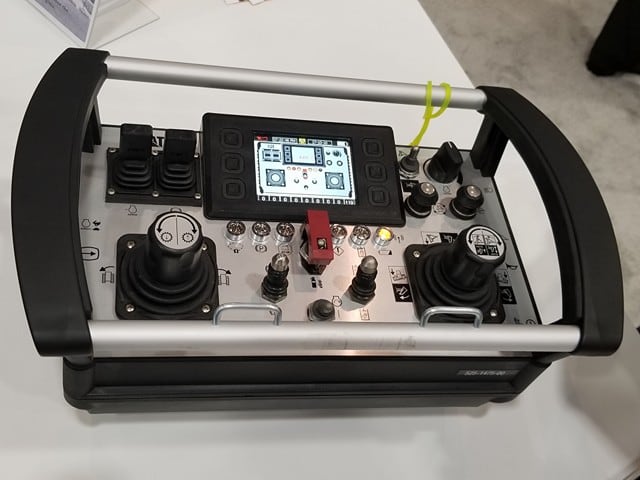Caterpillar is redesigning one of its military dozers to be semi-autonomous or remote controlled, in a development that will aid in urban battlefield explosives removal and breaching, according to Nic Hoffman, the lead engineer on the project.
The bulldozer, known as the D7R-II, will be semi-autonomous and controlled by a user with a remote control that has a 400-meter line of sight reach, according to Hoffman.
The remote control function means operators can move and drive the dozer behind covered and concealed positions or out of harm’s way.

The new dozer took a couple months to design, Hoffman said. Engineers working on the project had to change the hydraulics and the control system.
Bulldozers have been vital for the U.S. military and its partner forces in Iraq and Syria battling ISIS militants. The U.S. military has provided up-armored Caterpillar dozers to Iraqi forces and Syrian partner forces known as the Syrian Democratic Forces.
Videos on social media show U.S.-backed SDF fighters using the tractors to clear routes, remove explosives, and as makeshift defensive positions in the tense street-to-street urban warfare ongoing in Raqqa.
Because of the increasing importance of bulldozers in urban conflict, the tractors are also a major target of enemy forces, meaning drivers and operators of the bulldozers are at increased risk.
The new semi-autonomous dozers will also be important for post-war reconstruction in Iraq and Syria, where thousands of unexploded ordnance and booby traps still line streets and buildings of formerly held ISIS territories.
Caterpillar is still working with the U.S. Army to start testing and evaluation of the new remote-controlled dozers, Hoffman said.
Shawn Snow is the senior reporter for Marine Corps Times and a Marine Corps veteran.





